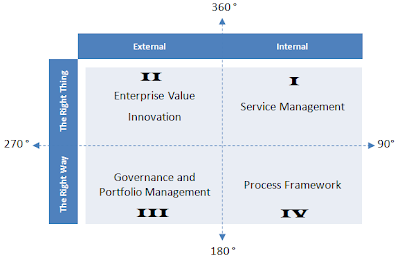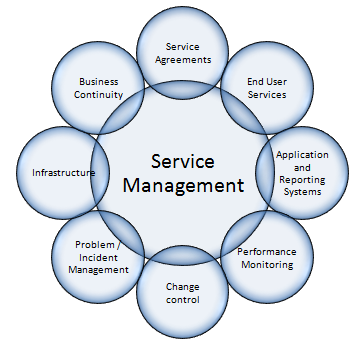Welcome to the 360.CIO!
A topic scan of the Chief Information Officer (CIO).
A topic scan of the Chief Information Officer (CIO).
This digest is intended for IT managers to better understand their own contributions in context of overall CIO responsibilities. The CIO is the senior position responsible for the operation of the organization's information technology and computer systems. In large organizations, there may be a CIO role for each major function and/or division.
Note: Depending on the size or type of industry, the role of CTO (chief technology officer) sometimes exists for organizations, especially organizations supplying scientific or technical products and services to its customers. We will address both CIO and CTO responsibilities but will not discern between the two.
Topics are summarized into two categories:
- "Doing The Right Thing" is all about providing enterprise value, technology innovation, and excellence in service management. This is the part of the IT organization most visible to others, although most of the work around service management is internal to IT.
- "Doing Things The Right Way" provides balance and control: governance and portfolio management is a shared responsibility with stakeholders of IT products and services. Process frameworks are largely internal.
I. Service Management is the service delivery and support as visible by IT customers. Service management provides integrity and reliability of computer systems, incident/problem management, support and training, and user-provisioned equipment. The value of IT is often judged by service management quality.
II. Enterprise Value is largely measured by its economic value: Return on Investment (ROI) of IT programs and operations including the direct and indirect long term Total Cost of Ownership (TCO). Value is typically generated from system consolidation and efficiencies as well as IT's role in enabling the enterprise to enter new markets and increase market share. Innovation provides revolutionary change through introduction of new technology. This covers services and products for the public, consumers, customers, or internal users. Recent innovations such as mobile technology, cloud computing, and social media are providing new value.
III. Governance Framework and Portfolio Management are the standards and practices for controlling allocation of IT resources to align with business objectives.
IV. Process Frameworks are the standards and structure for managing IT assets and services.





